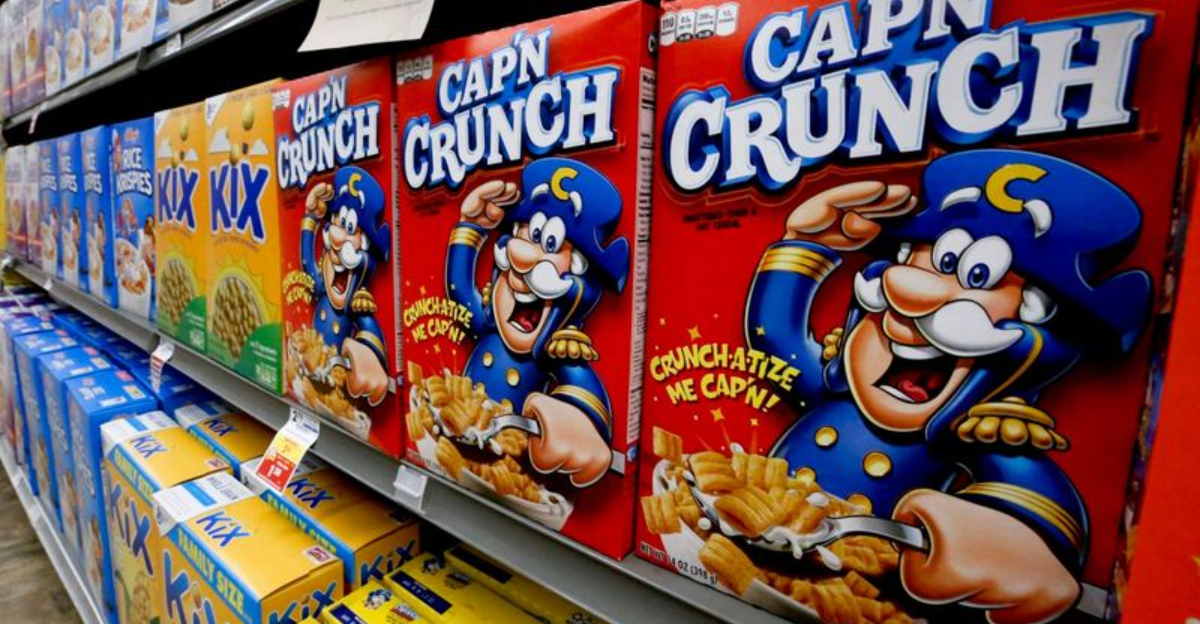These Are The Most Catastrophic Cereal Recalls In U.S. History

Breakfast cereal, a morning staple in millions of American homes, isn’t always as innocent as it seems. Over the years, numerous cereal products have been yanked from grocery shelves due to contamination, foreign objects, or mislabeling that posed serious health risks.
From glass fragments to salmonella outbreaks, these cereal recalls have shaken consumer confidence and highlighted the importance of food safety regulations.
1. Kellogg’s Honey Smacks Salmonella Nightmare (2018)
Crunchy puffs turned dangerous when Kellogg’s recalled millions of Honey Smacks boxes after 135 people across 36 states fell ill with Salmonella.
The outbreak hospitalized 24 people and led to an unprecedented $19.2 million fine against manufacturer Kerry, Inc. Investigators discovered the Gridley, Illinois plant had previously detected Salmonella 81 times but continued operations.
The CDC took the rare step of telling consumers: “Do not eat this cereal” – regardless of expiration date.
2. Glass Fragments in Special K Red Berries (2013)
Breakfast turned potentially bloody when Kellogg’s discovered glass fragments in their Special K Red Berries cereal. The company immediately pulled 36,000 packages from store shelves across the country.
The recall affected three different box sizes of the popular wheat flake and strawberry mixture. While no injuries were reported, the risk of serious cuts or internal damage from swallowing glass was significant.
Food safety experts called it a textbook example of physical contamination hazards.
3. Quaker’s Massive Salmonella Scare (2023-2024)
Granola lovers got a rude awakening when Quaker recalled over 60 products due to Salmonella contamination. The company’s profits plummeted 19% as they pulled Puffed Granola and Simply Granola from shelves nationwide.
The Danville, Illinois plant responsible for the outbreak was eventually shuttered. What began as a modest recall in December 2023 snowballed into one of the largest cereal recalls in recent history by January 2024.
FDA inspectors had previously flagged violations at the facility.
4. Cap’n Crunch’s Dangerous Treasure (1993)
Kids discovering plastic toy halves in their Cap’n Crunch seemed innocent enough until they started placing them over their eyes. The hollow toys created powerful suction, causing 36 reported cases of eye injuries and bruising.
Quaker hastily recalled 8.3 million boxes of the popular cereal. Parents were horrified to learn a simple breakfast prize could cause bloodshot eyes and potential vision damage.
Unopened boxes from this recall occasionally surface on auction sites as collector’s items – dangerous memorabilia from a breakfast gone wrong.
5. Cheerios’ Gluten-Free Fiasco (2015)
General Mills faced a PR disaster when their newly launched gluten-free Cheerios and Honey Nut Cheerios weren’t actually gluten-free. A production error at their Lodi, California plant led to wheat flour contamination in supposedly safe products.
For celiac sufferers who trusted the labeling, the consequences were painful and immediate. The company recalled 1.8 million boxes after multiple consumers reported adverse reactions.
The incident highlighted the serious nature of allergen mislabeling and damaged consumer trust in gluten-free claims.
6. Malt-O-Meal’s Dangerous Puffs (2008)
Breakfast turned brutal when Malt-O-Meal’s Puffed Rice and Puffed Wheat cereals were linked to a Salmonella Agona outbreak. The contamination sent multiple people to hospitals across the Midwest, Northeast, and Colorado.
Health officials were alarmed to discover the bacterial strain matched a 1998 outbreak from the same manufacturer. The scattered nature of cases made the outbreak particularly difficult to track and contain.
Budget-conscious shoppers who chose the more affordable brand paid with their health instead.
7. Kellogg’s Chemical Contamination Crisis (2010)
Something smelled fishy in boxes of Corn Pops, Honey Smacks, Froot Loops, and Apple Jacks – and it wasn’t the cereal. A chemical called methylnaphthalene in the packaging liners created an off-putting odor and taste that made some consumers sick.
Kellogg’s recalled a staggering 28 million boxes as reports of nausea and diarrhea poured in. The company’s revenue dropped 4% that quarter as consumers lost confidence.
Congressional leaders demanded answers about the chemical’s safety and Kellogg’s quality control measures.
8. Cap’n Crunch’s Second Voyage Into Trouble (2024)
Lightning struck twice for the Cap’n when multiple varieties, including the beloved “Oops! All Berries,” were pulled from shelves during Quaker’s massive Salmonella recall. The contamination originated from the troubled Danville, Illinois plant.
The recall expanded to include five Cap’n Crunch varieties and two Oatmeal Squares cereals. Parent company PepsiCo watched its reputation sink as the recall list grew to over 100 products.
Laboratory tests confirmed the presence of Salmonella Cubana in production facilities.
9. Malt-O-Meal’s Oatmeal Catastrophe (2009)
Warm bowls of comfort turned threatening when Malt-O-Meal recalled their Instant Maple and Brown Sugar Oatmeal. The culprit? Contaminated dry milk powder from a third-party supplier where FDA inspectors had detected Salmonella.
Though no illnesses were directly linked to the oatmeal, the company couldn’t risk consumer safety. The incident highlighted the vulnerability of food supply chains and how one contaminated ingredient can affect multiple products.
Budget breakfast options suddenly seemed like a dangerous gamble.
10. Cascadian Farm’s Hidden Allergen Blunder (2017)
Health-conscious consumers seeking organic options got a dangerous surprise when Cascadian Farm Organic Cinnamon Raisin Granola failed to disclose almonds on the label. For those with tree nut allergies, this oversight could trigger life-threatening reactions.
General Mills recalled over 40,000 pounds of the mislabeled cereal. The incident was particularly troubling since health-focused shoppers often scrutinize ingredients more carefully.
Fortunately, the error was caught early, preventing what could have been a wave of serious allergic reactions.
